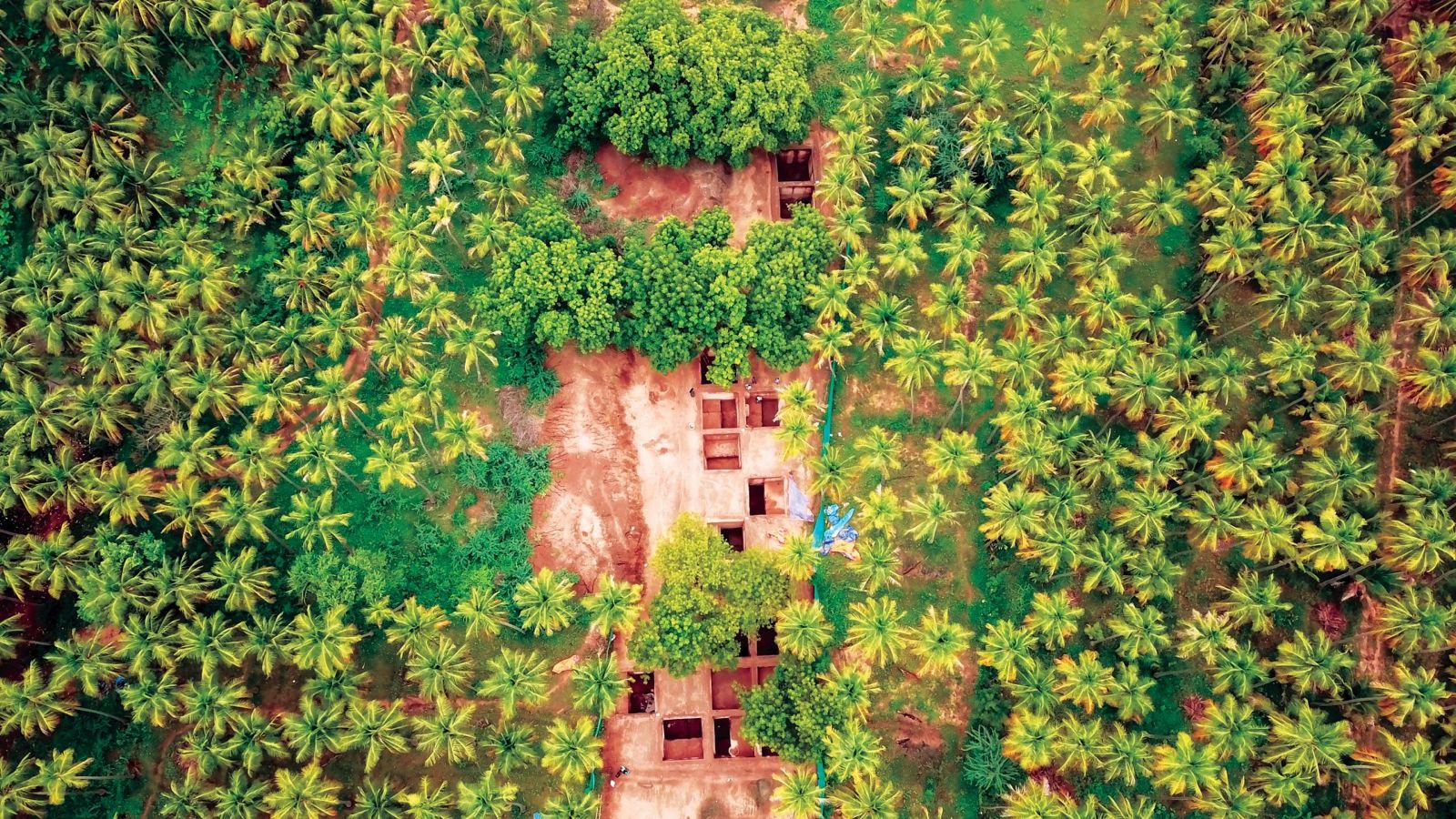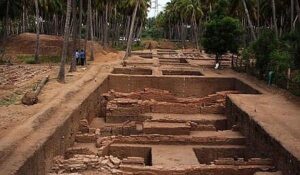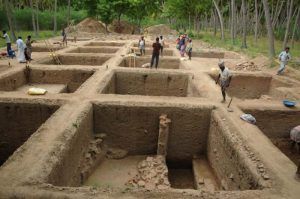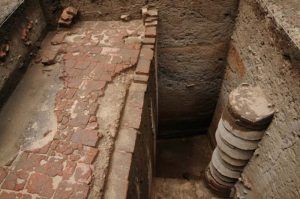ASI's ‘rewrite request’ to Keezhadi excavation findings came two years after Ramakrishna had submitted his report. The request mentioned that two independent experts recommended several corrections to enhance the report’s authenticity and precision but its response has raised suspicion.
Published May 25, 2025 | 9:00 AM ⚊ Updated May 25, 2025 | 9:00 AM

Carbon dating of charcoal found during excavations in February 2017 placed the settlement around 200 BCE, suggesting the presence of an urban civilization in Tamil Nadu during the Sangam Age, a period known for its rich literary and cultural heritage.
Synopsis: Responding to ASI’s recommendation to submit a revised report on Keezhadi findings, archaeologist Amarnath Ramakrishna said the request was in variance with well-founded conclusions.
The Archaeological Survey of India (ASI) has asked archaeologist K Amarnath Ramakrishna, who led the significant Keezhadi excavation near Madurai, to revise and resubmit his detailed report with necessary corrections on the ancient site.
This development comes over two years after Ramakrishna had submitted his comprehensive findings, raising questions about the chronology and documentation of one of Tamil Nadu’s most important archaeological discoveries.
According to a letter accessed by South First, the ASI pointed out that two independent experts, who reviewed Ramakrishna’s original report, recommended several corrections to enhance the report’s authenticity and precision.

The ASI’s letter expressed reservations about the chronological framework used in the report, stating that, based on current knowledge, the earliest period at Keezhadi should be no earlier than pre-300 BCE.
The ASI specifically highlighted the need for clearer nomenclature and re-orientation of the three chronological periods identified at the site. Most notably, the proposed timeline for the earliest phase, Period I, dated from the 8th century BCE to the 5th century BCE, was deemed to require more concrete scientific backing.
The ASI’s letter expressed reservations about the chronological framework used in the report, stating that, based on current knowledge, the earliest period at Keezhadi should be no earlier than pre-300 BCE.
The letter also emphasized that dating should be firmly anchored on Accelerator Mass Spectrometry (AMS) results and stratigraphic context, insisting that details such as layer numbers must accompany depth data to allow for proper comparative consistency.
Beyond chronology, the ASI raised concerns about the completeness and clarity of the visual documentation. The letter requested improved maps, including a clearer village map, and noted that several plates, stratigraphy drawings, contour maps, and trench plans were missing or insufficiently detailed.
These materials are crucial for validating the excavation findings and ensuring transparency.
In a detailed reply, Ramakrishna stood by his report and findings, reported The Hindu. Writing to Hemasagar A. Naik, Director (Exploration and Excavation) at the ASI, Ramakrishna refuted the need for a complete rewrite, describing the ASI’s request as contrary to the well-founded conclusions of the Keezhadi excavation.

Ramakrishna’s work at Keezhadi revealed multiple layers of habitation, including pottery, tools, and other artefacts.
He explained that the periodisation of the site followed rigorous archaeological methods, integrating stratigraphic sequences, cultural deposits, material culture, and AMS dating to reconstruct the chronological framework.
Ramakrishna asserted that he had addressed nomenclature concerns, and informed the ASI of the accepted changes in a letter dated 10 April 2023.
Further, Ramakrishna assured that if any layer numbers or data were missing, they would be supplemented to maintain the scientific rigor of the study.
He also categorically stated that all necessary maps, plates, and drawings had been submitted in both high-resolution digital and hard-copy formats to the ASI. If any materials were missing, he pledged to correct these omissions promptly.
Keezhadi, located in the Sivaganga district near Madurai, emerged as a key archaeological site following excavations beginning in 2016.

The ASI has raised concerns about the completeness and clarity of the visual documentation.
Carbon dating of charcoal found during excavations in February 2017 placed the settlement around 200 BCE, suggesting the presence of an urban civilization in Tamil Nadu during the Sangam Age, a period known for its rich literary and cultural heritage.
Ramakrishna’s work at Keezhadi revealed multiple layers of habitation, including pottery, tools, and other artefacts that collectively point toward a sophisticated and ancient Tamil culture with advanced urban planning.
Ramakrishna submitted the comprehensive excavation report to the ASI Director General on 30 January 2023. However, in the years leading to this submission, Ramakrishna had been transferred from Tamil Nadu to Assam. Now he serves as Director of Antiquities.
Despite two years having passed since the report’s submission, the ASI’s recent letter asking for a resubmission with corrections has raised concerns about procedural delays and scientific disagreements within the agency regarding the Keezhadi findings.
Speaking to South First, R. Balakrishnan, author of Journey of a Civilisation: Indus to Vaigai and former IAS officer, said the recent findings at Keezhadi and earlier at Adichanallur may appear revelatory today, but they are far from unexpected.
He recalled that way back in 1935, then ASI Director General K.N. Dikshit — a respected archaeologist trained under John Marshall — had predicted that excavations in the Tirunelveli-Madurai-Korkai region would yield evidence either contemporaneous with or just later than the Indus Valley civilisation. “Dikshit wasn’t a Tamil or a local scholar; his prediction was based on observed cultural continuities like the still-living tradition of making sangu valayal (conch bangles) — found only in Tamil Nadu outside Gujarat and Rajasthan,” said Balakrishnan.
He pointed out that there was nearly a hundred-year gap between Alexander Rea’s work and Sathyamoorthy’s excavation, and another 70 years before Amarnath Ramakrishna picked up the thread. “So, while Keezhadi’s findings may surprise some, they wouldn’t have surprised Dikshit, or John Marshall, or linguist Suniti Kumar Chatterji — and certainly not those of us who’ve followed this historical trajectory closely,” he added.
Balakrishnan also called the ASI’s move to seek a rewritten Keezhadi report “highly unusual” and reflective of deeper issues in how southern archaeology is treated. He said the bigger tragedy was not the lack of excavation, but the delay or suppression of findings, especially when the work is already done and documented.
Pointing to a historical pattern, he cited how the Adichanallur excavation report by T. Sathyamoorthy remained unpublished for over a decade until a court intervened.
“There’s been a noticeable pattern of bias,” he said. “In a country as culturally diverse as India, it’s essential that history is approached with sensitivity and accountability.”
(Edited by Majnu Babu).
